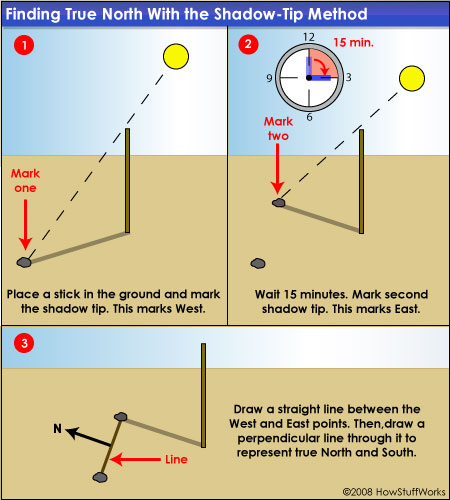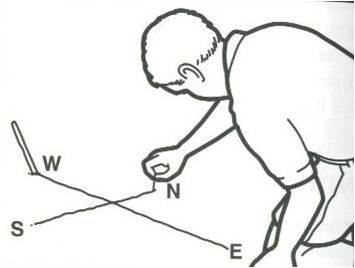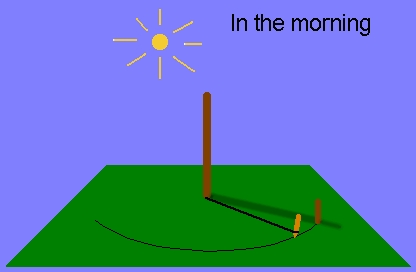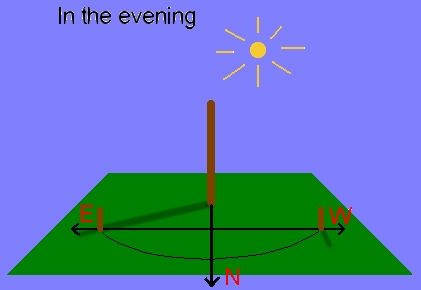How Can We Help?
The Watch Method
The Watch Method is one of the easier methods to use because it does not require anything except the watch on your hand. The Watch Method is shown with an analog watch (the one with hands!). It can, however, also be done with a digital watch, since you'll know the time. You only need to visualize the arms of a watch or clock in your mind or draw them on the ground.
To find a north-south line with your watch:

1. Point the hour hand towards the sun.
2. Find the center point of the angle between the hour hand and the 12 o’clock mark on the face of the watch.
3. The center angle is the north-south line.
Sources:
- http://www.scoutsociety.org/repository/orienteering/Finding-North.html
- http://adventure.howstuffworks.com/survival/wilderness/true-north2.htm
- http://ccfpd.org
Shadow Stick Method
For this approach, remember that when the sun casts shadows, those shadows are in the opposite direction as its position in the sky. That means when the sun is in the eastern sky, its shadows will point toward the west. It is less accurate than the Directions by Day - Equal Length Shadow method and moreso the closer to the equator you are, however, it takes much longer and is generally accurate enough to get you oriented in a needed direction.
- Grab a stick, preferably about a yard (1 meter) high, and stab it in the ground in a sunny area so that you can see its shadow.
- Use a rock or other sharp object and mark the tip of that shadow on the ground. Since the sun's shadows move from west to east during the day, this first point stands for west.
- Wait 15 minutes or so, then mark where the stick's shadow has moved. Now you should have two spots in the dirt: The first spot represents the west and the second spot represents the east.
- Draw a line between those two spots, you have a general idea of your east-west line.
- From there, draw your north-south line at a 90-degree angle to the east-west line.


Sources:
- http://www.scoutsociety.org/repository/orienteering/Finding-North.html
- http://adventure.howstuffworks.com/survival/wilderness/true-north2.htm
Equal Length Shadow Method
You'll need a sunny spot and level ground for this method. It is more accurate than the Directions by Day - Shadow Stick method, however, it takes much longer.
In the morning sometime before 10 am:
- Mark the spot that the tip of the sticks shadow meets the ground by either marking the soil or placing a rock on top of it.
- This marking will represent your West heading.
- Using a piece of string or other cordage, measure the distance from this point to the base of the stick.
- Use this same distance to draw an arch or circle around the stick.
The shadow from the stick will start to shrink throughout the day close to noon and then begin to extend once again later in the afternoon. At some point in the afternoon the tip of the sticks shadow will intersect the arch you drew earlier.
- Mark this spot in the afternoon arch as your East heading.
- Connect both marks and you will have your line of direction pointing from East to West.
- You can then draw your North and South lines perpendicular to the East and West line markings.
It is also helpful to make a semi-permanent structure to depict your directions afterward if you are not departing right away so that a flash rain, snow, high winds, or any other of the elements do not disturb your findings.


Sources: